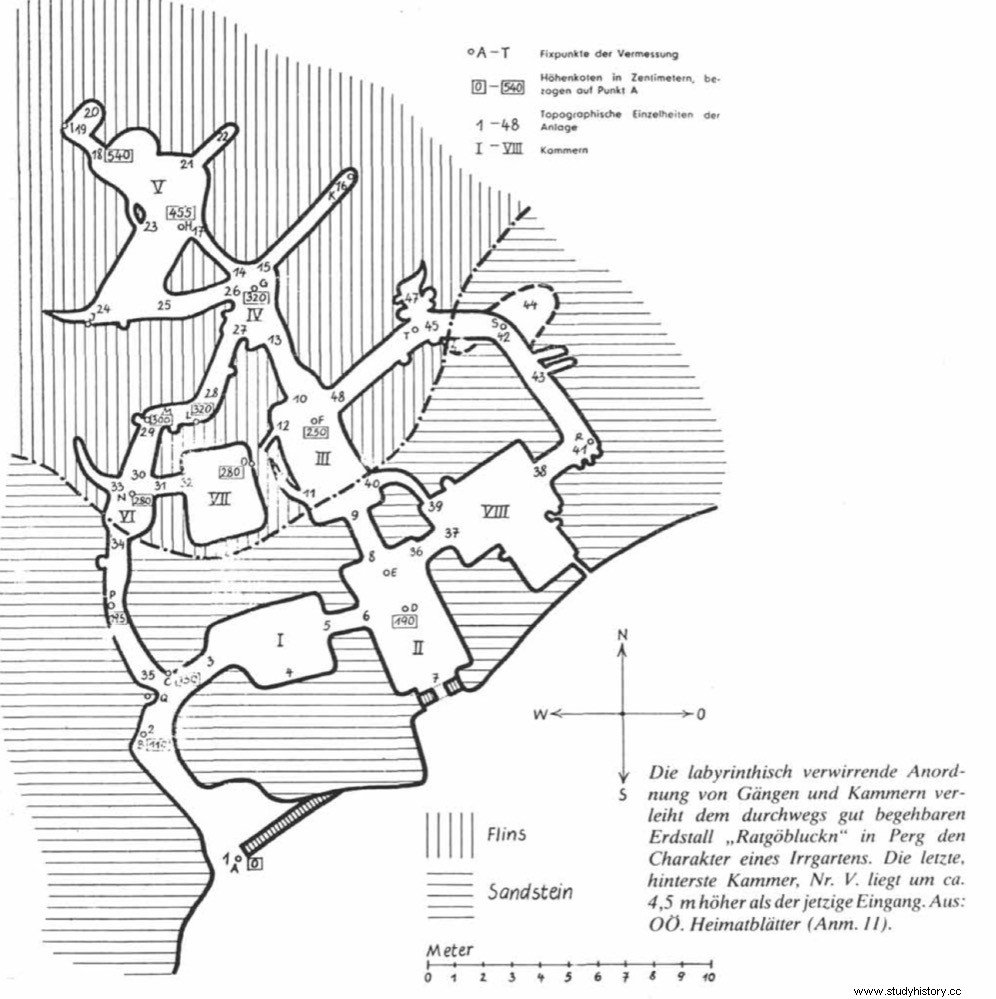Throughout Europe there are thousands of tunnels whose origin and function are unknown, being especially abundant in Austria and the German region of Bavaria, where more than 700 have been counted. But there are also in France, the United Kingdom, Poland, the Czech Republic, Slovakia, Hungary or Spain.
They receive different names according to the zones. In some places they are called Unterirdische Gänge (underground passageways ) or Geheimgänge (secret passageways ). In Bavaria they are known as Schratzlloch , term that derives from the belief of having been excavated by dwarfs. In parts of Austria they are called Grufen . But the term that has prevailed over the others in the historical literature is Erdstall , commonly used in Lower Austria.

Most do not exceed 50 meters in length, with a maximum width of 60 centimeters, and a height between 1 and 1.4 meters, just the minimum for a short person to circulate through them without problems.
Some form connected systems, with different levels ending in larger chambers called Schlusskammer , and even with passages to and fro, but they hardly ever exceed the aforementioned length.
Most have an additional passageway, which is called a Schlupf , whose entrance is so narrow that they can only be accessed by crawling, as long as one is skinny enough.
It is unknown at what time they could have been built, although most researchers believe that they must have a medieval origin. As for their function, different theories have been proposed, such as that they would be places related to some type of religious belief, or that they would serve as an escape route or hiding place from the attack of a supposed enemy. The latter doesn't seem likely, because none of the tunnels have an exit other than the entrance itself.

These entrances are usually located in places such as kitchens of old farms, near churches or cemeteries or directly in the middle of forests.
Historian Anton Haschner believed that they were empty symbolic tombs, built by medieval settlers in their new places of residence, to remember their ancestors. There their souls would rest waiting for the Final Judgment. When at the end of the 11th century the idea of purgatory began to spread people would have stopped building such enclosures.

Absolutely no organic or material remains have appeared inside most of the tunnels, they are completely empty, so their dating is complicated. In a few, medieval metal tools, remains of charcoal from bonfires, pottery and some grinding stones have been found.
Radiocarbon analysis of these objects places them between the 10th and 13th centuries. However, some researchers believe that the cavities could be up to 5,000 years old.
The first documentary mention of the term erdstall appears in the tax records of the year 1449 in the Austrian city of Asparn, indicating the amount that its owners they had to pay the public treasury.

And the first investigations of the tunnels were carried out by the Benedictine Lambert Karner between 1879 and 1903, publishing his results in the book Künstliche Höhlen aus alter Zeit (Artificial Caves of the Ancient Times ). Karner already ruled out their usefulness as shelters, hiding places or escape routes.
Almost all erdstall they are too narrow to be exploited for tourism, but at least two, the Ratgöbluckn in Perg and the Kapellenberg in Grosskrut, both in Austria, are open to the public and can be visited. And in the town of Zwiesel in Bavaria, Germany, you can take a guided tour of an underground system of tunnels, whose origin is believed to be in the erdstall .
